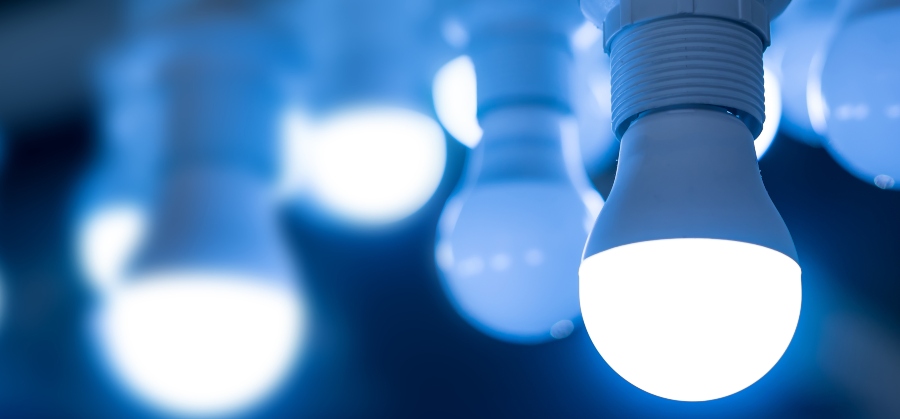Application of LED in the field of biomedicine
In recent years, LEDs have been discovered in many innovative applications in the fields of biotechnology and medicine. For example, LEDs can accelerate DNA replication and treat patients with neurological diseases such as frostbite. High-speed flashing LED lights can treat dyslexia, and specific frequency flashing LED lights can be used. Help treat Alzheimer's disease; for ultraviolet LEDs, shortwave ultraviolet light can slow down the spread of influenza, UVB LEDs can treat vitamin D deficiency patients, blue-violet LEDs can treat bacterial infections and some skin diseases; infrared LEDs can be treated by irradiation For brain damage, the use of 635-nanometer LEDs can be used for weight loss treatment. What breakthroughs have LED made in the medical field in the past year? Sunmory will take you to take a look.
Effectively overcome morning sleepiness
According to foreign media reports, researchers from the Korea Institute of Science and Technology (KAIST) recently stated that research has confirmed that blue LED lighting can effectively help people overcome morning sleepiness.
Professors Hyeon-Jeong Suk and Kyungah Choi of the Department of Industrial Design at KAIST and their team believe that the morning light rich in blue lighting has a time-dependent effect on physiological responses. Compared with warm white light, it affects human melatonin levels and vigilance. Subjective feelings of sex, mood and visual comfort have a positive effect.
Or a painless cardiac resuscitation therapy can be achieved. Researchers at Leiden University Medical Center in the Netherlands proposed that LEDs help to adjust arrhythmia. The research team used a bioelectronic defibrillator implanted with LEDs to reset irregular heartbeats. They developed a system that can detect rapid arrhythmia in the atria of mice and send a signal to an LED device implanted near the heart. According to Dani l Pijnappels, a principal investigator in the Department of Cardiology at Leiden University, the flashing light from the LED can cause the heart to produce an electric current, thereby stopping the arrhythmia. This is achieved by using gene therapy to introduce specific light-sensitive proteins into the heart, which means that the normal rhythm of the heart is restored immediately and automatically.
It can treat urinary urgency and frequent urination
Researchers from China and the United States have implanted light stimulation devices in rats to restore normal bladder function to rats with frequent urination and urgency. This research shows a new clinical treatment system, which is expected to be expanded to the fields of cardiac assistance and weight management in the future.
This joint team composed of Northwestern University, University of Washington, Massachusetts Institute of Technology, Beihang University, and other institutions edits the genes in cells so that they can respond to light stimulation. In this case, the edited bladder nerve cells will inhibit neural activity under the light. To this end, researchers have implanted an LED light device in the abdominal cavity of a rat that was diseased by human drugs, connected to a highly sensitive sensor. The sensor is made of flexible material, monitors the data around the bladder in real-time, and wirelessly transmits it to the external recorder.
Once the recorder detects abnormal bladder signals, such as emptying the bladder unnecessarily frequently, it will send a wireless signal to the LED light in the rat's abdomen to turn on the light. The bladder nerve cells that have been optogenetically edited beforehand will inhibit the corresponding urination activity under the light.
Help diagnose and treat cancer
The Korea Electronic Technology Research Institute (KERI) said that Korean scientists have developed a minimally invasive technology that targets tumor cells to diagnose and treat cancer through the use of light-emitting diodes (LED) and laparoscopy.
PDT is a technology that uses photosensitizer drugs to "activate" certain types of light to help promote treatment. This technique is more effective because the light only targets the growth of cancer cells and not normal cells. Officials from the Korea Institute of Electronics Technology (KERI) said that the technology developed by KERI uses LED light to detect cancer cells and also uses a PDT laser based on laparoscopic technology to treat cancer. Waseda University in Japan also uses LEDs to treat cancer. It is reported that the research team of the school has developed an LED implantable device, composed of LED chips and bioadhesive nanosheets, successfully shrinking tumors in mice through phototherapy. The implantable device adopts rhythmic photodynamic therapy for the inner surface of animal tissues and releases low-intensity radiation to treat targeted lesions, thereby achieving the purpose of treatment. This therapy is a long-term treatment that uses low-dose special drugs and special lighting to kill cancer cells. By directly applying rhythmic photodynamic therapy to the targeted lesion. Can reduce the impact on healthy areas.
Fit to the skin showing pulse and electrocardiogram
The ultra-thin flexible display developed by researchers at the University of Tokyo can display pulse, electrocardiogram, and other information through the skin. The use of air-permeable micro-mesh electrodes with stretchable Micro LED lights and circuits creates a very thin and flexible display of only 1mm, making it more fully fit with the skin. In addition to detecting pulse speed through it, it can also be connected to a smartphone to directly send important information to the cloud system for storage. This technology is valuable in that it can connect individual patients with medical institutions anytime and anywhere, while helping patients display important physical conditions, and at the same time, through connected devices, inform family members, medical institutions, etc. to follow up with information to assist patients who need to be cared for at home.
Promote hair growth
The Korea Institute of Science and Technology (KAIST) has developed a Micro LED wearable device that uses vertical Micro LEDs to successfully help mice grow hair again. The device used a flexible array of 900 vertical Micro LEDs and was tested on the backs of shaved mice. After 20 consecutive days of treatment, the hair growth rate of mice was significantly faster than that of untreated mice. Moreover, the newly-grown hairs of the mice after treatment are longer and the hair area is wider. KAIST pointed out that Micro LED will not heat up to damage the human skin, and compared with traditional phototherapy lasers, the energy consumption per unit area is only one-thousandth of that.




Comments
Post a Comment